Ethanol-Blended Fuel Dilemma: Is Your Vehicle Safe To Run On Biofuel?
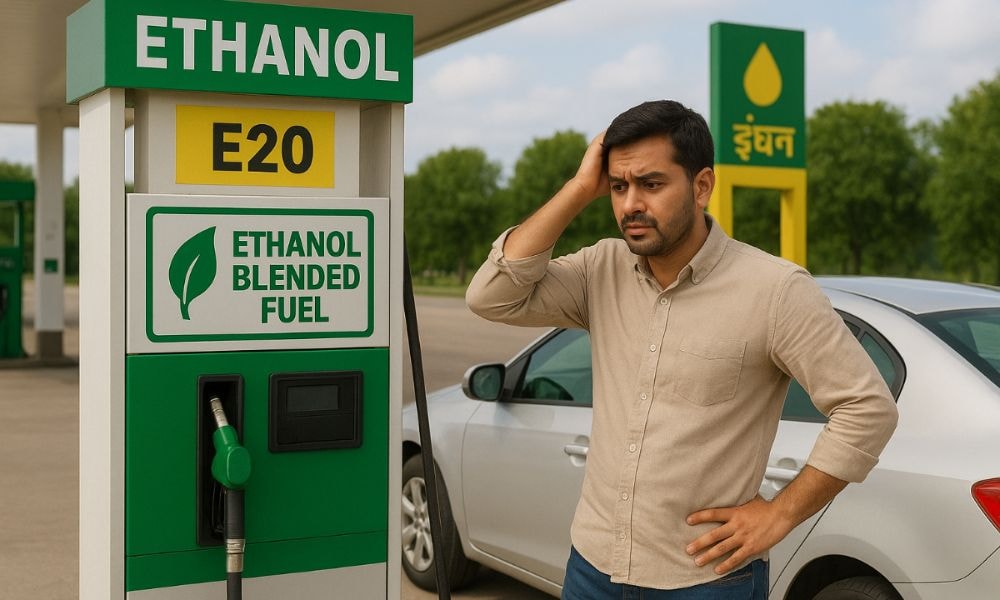
- - Ethanol is derived from renewable resources like corn, sugarcane, barley and wheat
- - Oil Ministry claim marginal drop in performance of vehicles running on ethanol-blended fuel
- - Auto majors have highlighted corrosion, part damage, ethanol-compatible part replacement for older vehicles to run on ethanol-blended fuels
Only a few days back the Union Ministry of Petroleum and Natural Gas had released a statement commenting on the concerns raised by citizens on the drop in mileage and performance on their vehicles due to the use of ethanol-blended fuels like E10 and E20. While a lot of citizens have responded to the statement by calling it incorrect and misleading, auto majors have also raised concerns with regards to adaptation of ethanol-blended fuel pertaining to older vehicles that are pre-BS6 emission compliant.
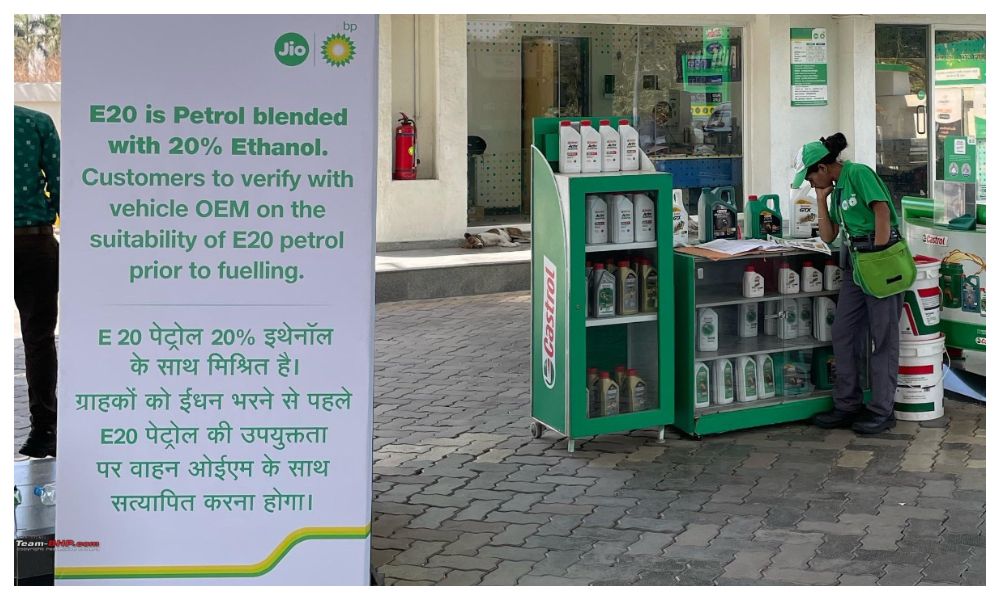
But before we get to that, let’s quickly understand what ethanol-blended fuel is, how it is acquired, how different it is from pure gasoline, and eventually understand how it affects older two- and four-wheelers that aren’t designed to run biofuels.
Ethanol is a type of alcohol that is derived from natural resources like the molasses or husk of crops like corn, sugarcane, wheat and barley. Ethanol-blended fuel was available from 2022 wherein 90 percent petrol was blended with 10 per cent ethanol, and the vehicles manufactured from 2020-onwards were BS6 emission compliant designed to run on the biofuel. Subsequently, in 2023, the oil ministry rolled-out E20 biofuel which is 20 per cent ethanol blended with 80 per cent petrol. Abiding to the updated emission norms, auto brands updated the new vehicle powertrains to BS6 Phase 2 compliance to run on E20 fuel.
Also Read: Ethanol Now More Expensive Than Petrol; Improves Performance: Govt
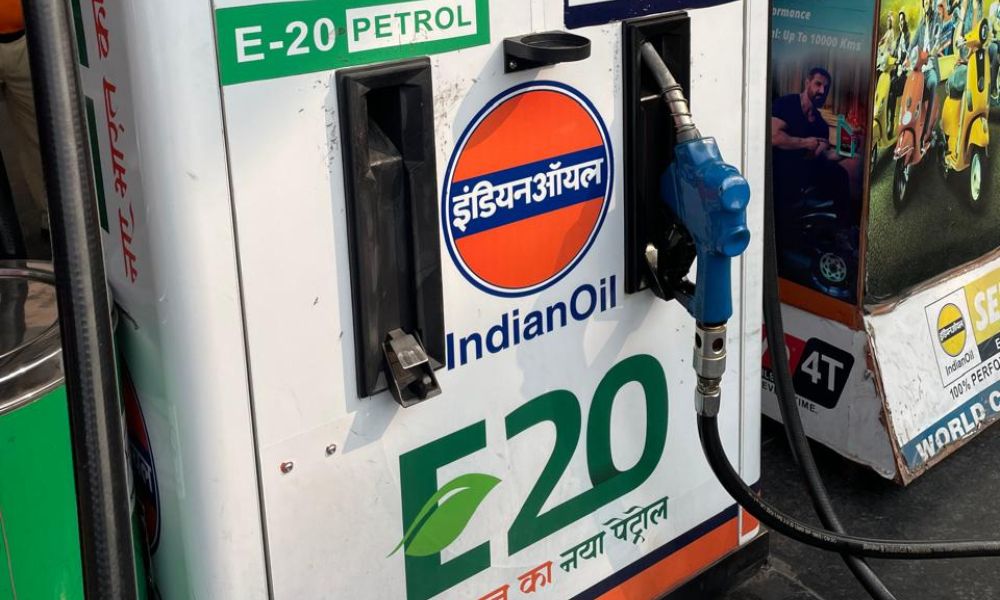
Now, vehicles manufactured from 2020-onwards would not face noticeable operating issues with E10 or E20 biofuel. However, a majority of two- and four-wheelers currently plying on our roads are pre-BS6 compliant, which are BS4 or BS3, some even older, that are not engineered to run on ethanol-blended fuel. While biofuel has a higher-octane rating than petrol allowing it to burn more efficiently, its energy density is lower than petrol resulting in a lower energy production.
Taking this into consideration with pre-BS6 complaint vehicles, the fueling systems on these automobiles aren’t calibrated or engineered to run on biofuel in the most efficient manner. It is a known study and auto majors too have highlighted the adverse effects of running a non-biofuel compliant engine with ethanol-blended fuel. Since ethanol is primarily derived from plant-based sugars and starches, the chemical composition is different and contains higher composition of oxygen compared to petrol.

But, that’s not all, there are couple other factors that need to be considered and evaluated with the use of ethanol-blended fuel. Since the chemical composition of biofuel is different, several components along the fuel system like the fuel tank, fuel lines, injector, seal and gaskets, need to be considered for change to the material type that is suitable for use with ethanol. Next, as ethanol contains more oxygen compared to regular petrol, the fueling system needs to be recalibrated at the fuel pump, injectors and ignition timing for ideal and complete combustion. Additionally, the engine control module that sends out signal to the fueling system on the quantity and duration of fuel being injected into the engine also need to be recalibrated in order to achieve the best air-fuel mixture for complete and efficient combustion. For the system to work with ethanol-blended fuel, some sensors like the O2 sensor, which reads the amount of oxygen to determine the quality of the combustion to the ECU also needs to be calibrated for replaced with a suitable one as per the requirement.
With all of the above, since the percentage of oxygen is higher with ethanol, corrosion becomes a matter of concern with the fuel system of older vehicles is it can damage the components to malfunction over time. Unlike regular petrol, where, if the vehicle isn’t being used for a long duration, tanking up the fuel tank prevents any fuel vapour from causing prolonged damage to the tank. However, in the case of biofuel, due to the hygroscopic qualities of the ethanol, the fuel needs to be kept away from any contact with water, and for storage, the fuel tank needs to be emptied dry thoroughly to prevent the oxygen in the fuel from corroding the tank and other fueling system related components.
Also Read: Delhi Pauses Fuel Ban On 10-Year-Old Diesel, 15-Year-Old Petrol Vehicles

Currently, the government has vaguely mentioned that with some modifications and regular maintenance, older or any petrol-powered vehicle that is facing issue with ethanol-blended fuel can be fixed. However, there is no clarity on what is to be done and how. To our understanding, the maintenance of vehicles needs to be consistent and bit extensive in ensure the fuel lines do not get chocked or corroded over time. Secondly, by adding a recommended quantity of fuel additive to the ethanol-blended fuel on tank-ups will prevent the gum and residue causing components in the fuel to unstick from the walls of the fuel lines and intake port to help in proper combustion.
As for the drop in performance, the above actions will help reduce the effect, but without recalibration of the ECU, optimum performance will be restricted. Ideally, like other countries, at the fuel station, multiple fuel blends include zero blend should be avoid all the above from happening in the first place. Depending on the fuel-type compliance of the vehicle, user can according opt for the correct fuel and maintain the smooth functioning if their vehicles.
Trending News
 3 mins readMahindra XEV 9s Launched: In Pictures
3 mins readMahindra XEV 9s Launched: In Pictures
Latest News
 car&bike Team | Nov 27, 2025BMW F 450 GS Production Begins At TVS PlantTVS Motor Company and BMW Motorrad have announced a landmark achievement of 200,000 units produced under their partnership.1 min read
car&bike Team | Nov 27, 2025BMW F 450 GS Production Begins At TVS PlantTVS Motor Company and BMW Motorrad have announced a landmark achievement of 200,000 units produced under their partnership.1 min read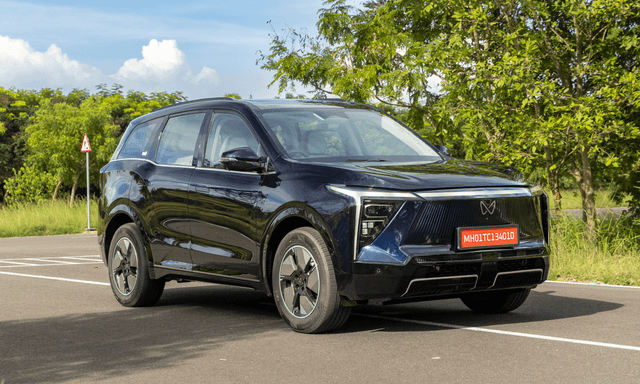 car&bike Team | Nov 27, 2025Mahindra XEV 9S: Variants, Features, Prices ExplainedThe XEV 9S is offered in four variants, with three battery pack options. Here is a rundown of what each variant gets.3 mins read
car&bike Team | Nov 27, 2025Mahindra XEV 9S: Variants, Features, Prices ExplainedThe XEV 9S is offered in four variants, with three battery pack options. Here is a rundown of what each variant gets.3 mins read Bilal Firfiray | Nov 27, 2025Mahindra Introduces New 70 kWh Battery Pack With XEV 9SHere’s everything you need to know about Mahindra’s new battery pack that debuts with the newly launched XEV 9s2 mins read
Bilal Firfiray | Nov 27, 2025Mahindra Introduces New 70 kWh Battery Pack With XEV 9SHere’s everything you need to know about Mahindra’s new battery pack that debuts with the newly launched XEV 9s2 mins read Bilal Firfiray | Nov 27, 2025Mahindra XEV 9s Launched: In PicturesThe third offering from Mahindra’s born EV line-up, the 9s, is a three-row electric SUV launched at Rs 19.95 lakh3 mins read
Bilal Firfiray | Nov 27, 2025Mahindra XEV 9s Launched: In PicturesThe third offering from Mahindra’s born EV line-up, the 9s, is a three-row electric SUV launched at Rs 19.95 lakh3 mins read car&bike Team | Nov 27, 20252025 Ducati Streetfighter V2 Launched In India At Rs. 17.50 LakhThe 2025 Ducati Streetfighter V2 boasts of being the lightest Streetfighter ever created by Ducati with a dry weight of just 175 kg.3 mins read
car&bike Team | Nov 27, 20252025 Ducati Streetfighter V2 Launched In India At Rs. 17.50 LakhThe 2025 Ducati Streetfighter V2 boasts of being the lightest Streetfighter ever created by Ducati with a dry weight of just 175 kg.3 mins read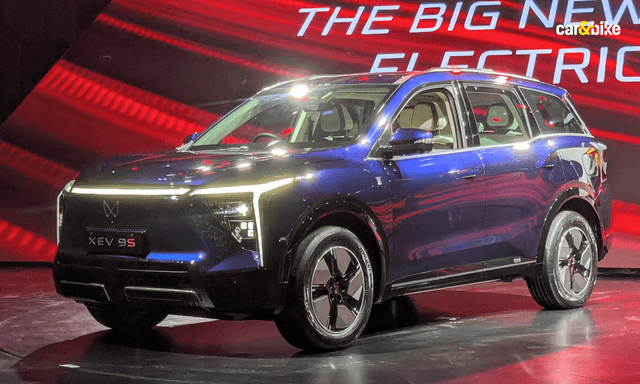 Amaan Ahmed | Nov 27, 2025Mahindra XEV 9S 7-Seat Electric SUV Launched At Rs 19.95 LakhSitting at the top of Mahindra's all-electric model range, the XEV 9S is the fastest seven-seat SUV under Rs 70 lakh, the carmaker claims.3 mins read
Amaan Ahmed | Nov 27, 2025Mahindra XEV 9S 7-Seat Electric SUV Launched At Rs 19.95 LakhSitting at the top of Mahindra's all-electric model range, the XEV 9S is the fastest seven-seat SUV under Rs 70 lakh, the carmaker claims.3 mins read
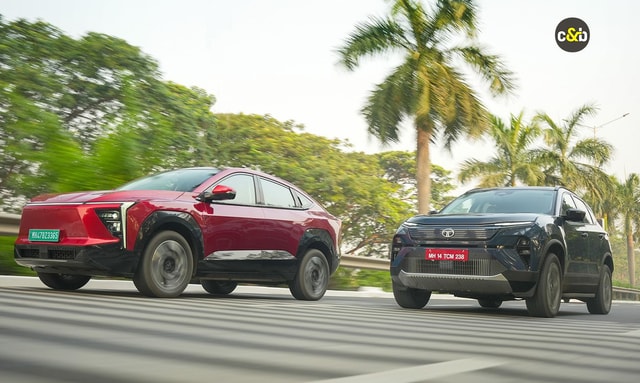 Bilal Firfiray | Nov 26, 2025Tata Harrier EV vs Mahindra XEV 9e: Battle Of India’s Electric TitansWhen India made two electric SUVs battle it out, the winner is the buyer. They get a choice to take home what’s best suited for them – and read on to find out which one is better for YOU.1 min read
Bilal Firfiray | Nov 26, 2025Tata Harrier EV vs Mahindra XEV 9e: Battle Of India’s Electric TitansWhen India made two electric SUVs battle it out, the winner is the buyer. They get a choice to take home what’s best suited for them – and read on to find out which one is better for YOU.1 min read Janak Sorap | Nov 19, 2025Hero Xpulse 210 Vs Kawasaki KLX 230 Comparison Review: Dual-Sport DilemmaWith a price difference of just Rs 12,000, which of the two dual-sport motorcycles is meant for you?1 min read
Janak Sorap | Nov 19, 2025Hero Xpulse 210 Vs Kawasaki KLX 230 Comparison Review: Dual-Sport DilemmaWith a price difference of just Rs 12,000, which of the two dual-sport motorcycles is meant for you?1 min read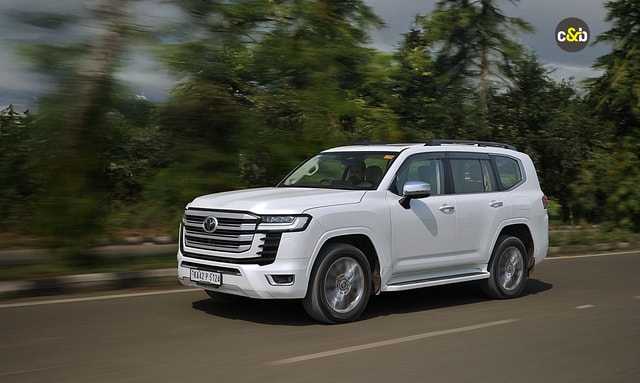 Jaiveer Mehra | Nov 17, 20252025 Toyota Land Cruiser 300 Review: Beast From The EastThe Land Cruiser name may have a long and storied history, but does it fit the bill for an Rs 2 crore-plus SUV in India?13 mins read
Jaiveer Mehra | Nov 17, 20252025 Toyota Land Cruiser 300 Review: Beast From The EastThe Land Cruiser name may have a long and storied history, but does it fit the bill for an Rs 2 crore-plus SUV in India?13 mins read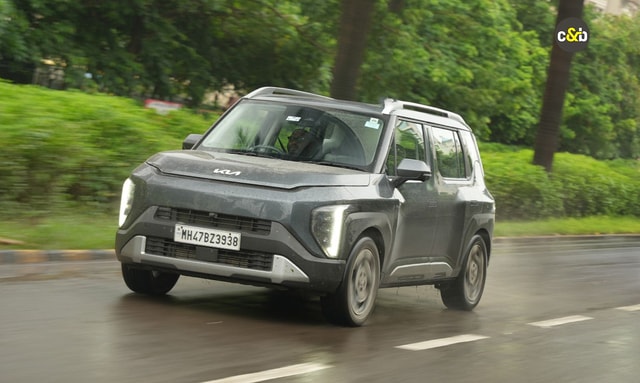 Seshan Vijayraghvan | Nov 17, 2025Kia Syros 1.0 Turbo Petrol: 6000 km Long-Term Review – Final Report!I lived with the Syros for more than 6000 km, over 3 months, and in this final report, I am going to talk about the Pros, the Cons, and everything in between.1 min read
Seshan Vijayraghvan | Nov 17, 2025Kia Syros 1.0 Turbo Petrol: 6000 km Long-Term Review – Final Report!I lived with the Syros for more than 6000 km, over 3 months, and in this final report, I am going to talk about the Pros, the Cons, and everything in between.1 min read car&bike Team | Nov 13, 2025Numeros n-First First Ride Review: Motorbike-Inspired EV ScooterWe test rode the n-First i-max+ in busy Bengaluru roads recently. It’s ability to tackle city roads well and comfortable seats make it a scooter worth a check. Read on to know if it makes sense for you to consider buying it.3 mins read
car&bike Team | Nov 13, 2025Numeros n-First First Ride Review: Motorbike-Inspired EV ScooterWe test rode the n-First i-max+ in busy Bengaluru roads recently. It’s ability to tackle city roads well and comfortable seats make it a scooter worth a check. Read on to know if it makes sense for you to consider buying it.3 mins read






























































































































